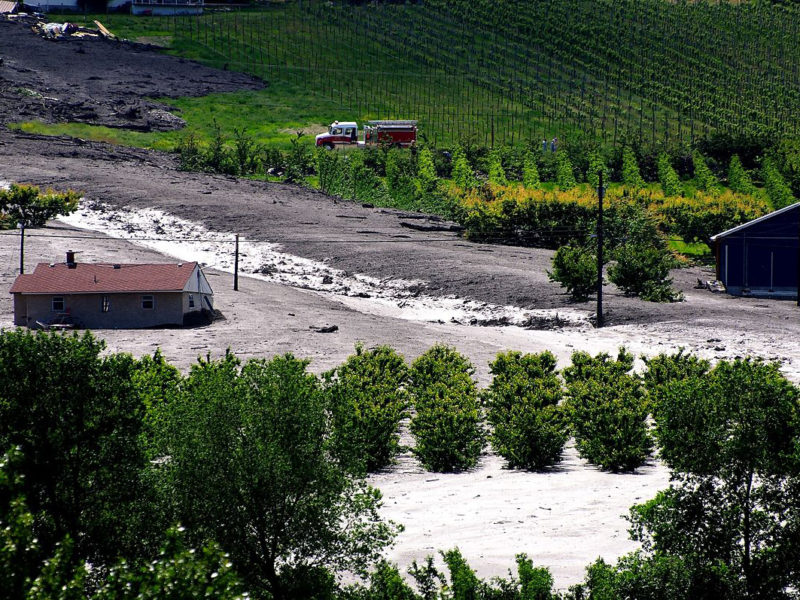BC’s auditor general says the province is not doing its job when it comes to ensuring the safety of dams in BC, raising the risk of failures such as the 2010 collapse of the Testalinden Dam south of Oliver that swept away vineyards and farm equipment.
“Our audit concluded that the ministry has not effectively overseen the safety of dams in BC,” auditor general Michael Pickup told a September 14 news conference. “Dams are dangerous, and it is crucial that they be properly maintained to minimize their risk of failing. Failures can be disastrous for people, the environment and property.”
A report Pickup’s office released this week sought to determine if the BC Ministry of Forests, Lands, Natural Resource Operations and Rural Development (FLNORD) has effectively overseen the safety of the 1,900 dams in BC. While it found the province promoted dam owner compliance, the province “did not adequately verify or enforce compliance” as required under the Water Sustainability Act.
“They are not doing what they set out to do in terms of compliance,” says Pickup.
While dam owners are responsible for dam safety, government provides oversight in order to mitigate the risk to people, property and the environment, Pickup explains.
Of the 1,900 dams across the province, 1,000 are designated “high risk,” meaning a failure could kill people and damage the environment and property. The impact of failures at the other 900 dams is lower, only damaging the owner’s property.
However, the report noted that the downstream risk from low-consequence dams is not re-evaluated on a regular basis. Moreover, at least 196 dams are missing from FLNORD records. The province has no means to identify unauthorized dams.
Complicating dam oversight are competing priorities in regional offices and a shortage of staff that led to significant backlogs on existing dam safety officers.
The report makes nine recommendations for improving the province’s oversight of dam safety, including informing all dam owners of their regulatory obligations, improving processes to verify dam owner compliance, improving monitoring of compliance and enforcement activities and strengthening performance measures and targets
The province accepted all nine of the auditor’s recommendations, however it remains to be seen what action will be taken.
“Our recommendations are not prescriptive,” says Pickup. “It is the government’s job to create detailed policy. They need to figure out, given what we have found, how they want to monitor compliance and enforcement.”


 Wildfire state of emergency ends
Wildfire state of emergency ends